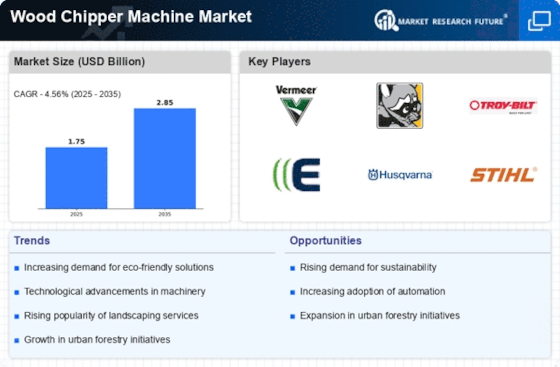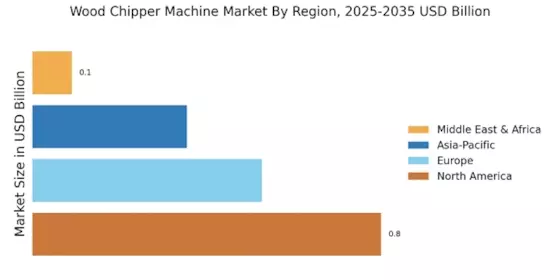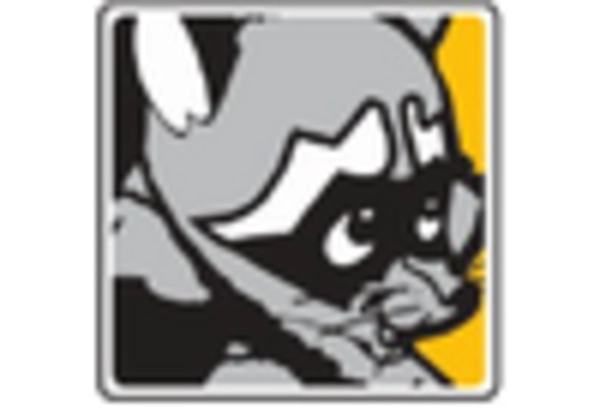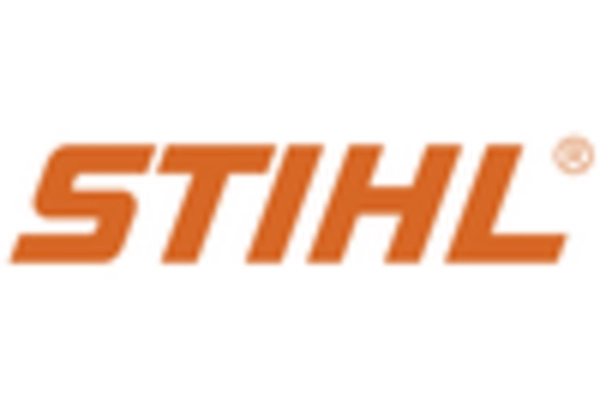Rising Environmental Awareness
The Wood Chipper Machine Market is experiencing a notable surge in demand due to increasing environmental awareness among consumers and businesses. As sustainability becomes a priority, more individuals and organizations are seeking efficient ways to manage organic waste. Wood chippers facilitate the recycling of tree trimmings, branches, and other green waste into mulch or compost, thereby reducing landfill contributions. This trend is reflected in market data, which indicates a projected growth rate of approximately 5% annually in the wood chipper segment. The emphasis on eco-friendly practices is likely to drive innovation in the Wood Chipper Machine Market, as manufacturers develop more efficient and environmentally friendly models.
Government Regulations and Incentives
The Wood Chipper Machine Market is also shaped by government regulations aimed at promoting sustainable waste management practices. Many governments are implementing policies that encourage the use of wood chippers for organic waste recycling. Incentives such as tax breaks or subsidies for purchasing eco-friendly equipment are becoming more common. This regulatory environment is likely to stimulate market growth, as businesses and municipalities invest in wood chippers to comply with environmental standards. Data indicates that regions with stringent waste management regulations are witnessing a faster adoption of wood chippers, suggesting a direct correlation between policy frameworks and market expansion in the Wood Chipper Machine Market.
Increased Adoption in Municipal Services
The Wood Chipper Machine Market is witnessing increased adoption among municipal services, driven by the need for effective waste management solutions. Municipalities are increasingly utilizing wood chippers to process yard waste, tree debris, and other organic materials, thereby promoting recycling and reducing landfill use. This trend is supported by data indicating that municipalities are investing more in equipment that enhances their waste management capabilities. The growing focus on community beautification and environmental responsibility is likely to further propel the demand for wood chippers in public services. As cities strive to maintain green spaces and comply with environmental regulations, the Wood Chipper Machine Market stands to benefit from this trend.
Technological Innovations in Wood Chippers
Technological advancements are playing a crucial role in the evolution of the Wood Chipper Machine Market. Innovations such as improved cutting mechanisms, enhanced safety features, and the integration of smart technology are making wood chippers more efficient and user-friendly. The introduction of electric and hybrid models is particularly noteworthy, as these options cater to a growing segment of environmentally conscious consumers. Market data shows that the segment for electric wood chippers is expected to grow by approximately 7% annually, reflecting a shift in consumer preferences. As manufacturers continue to invest in research and development, the Wood Chipper Machine Market is likely to see a wave of new products that meet the demands of modern users.
Growth in Construction and Landscaping Sectors
The Wood Chipper Machine Market is significantly influenced by the expansion of the construction and landscaping sectors. As urbanization accelerates, the demand for landscaping services has risen, leading to an increased need for wood chippers. These machines are essential for maintaining green spaces, parks, and residential gardens, which are integral to urban planning. Market analysis suggests that the landscaping services sector is expected to grow by over 6% in the coming years, thereby boosting the demand for wood chippers. This growth presents opportunities for manufacturers to innovate and cater to the evolving needs of landscaping professionals within the Wood Chipper Machine Market.



















Leave a Comment